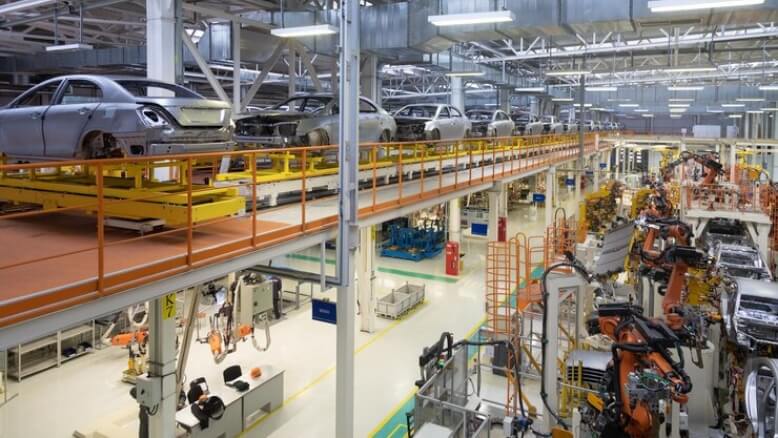Harnessing Technology for Automotive Supply Chain Optimization

In the aftermath of the COVID-19 pandemic and the Russia-Ukraine war, the global microchip shortage has already garnered a lot of attention, with several automotive companies that follow just-in-time (JIT) manufacturing, having halted their assembly lines and production.
However, it has obscured the fact that the automotive industry involves a complex web of interdependent supplier relations spread across geographies, which entail their own set of challenges, including poor visibility, inventory shortages, and compliance mandates.
Below, we elaborate on the several barriers disrupting the automotive supply chain and how they can be overcome by leveraging technology.
Using Technology to Mitigate Automotive Supply Chain Risks
The ruthless drive to improve speed and efficiency and reduce costs has made the automotive supply chain very fragile. By harnessing the vast goldmine of untapped data by drawing on technology such as machine learning (ML), artificial intelligence (AI), the internet of things (IoT), cloud computing, and blockchain, automobile manufacturers can successfully undertake their MRO supply chain optimization, increasing visibility and streamlining compliance.
#1 Challenge: Lack of Supply Chain MRO Visibility
Poor supply chain visibility is the biggest concern of automotive manufacturers, as it disrupts production schedules, increases lead times, and delays delivery to customers.1 In fact, Toyota’s 40% production cut can be traced back to the parts shortages caused by visibility concerns.2
The lack of supply chain MRO visibility is concerning, as first-tier suppliers tend to have an extended global supplier network, which may lead to manufacturers lacking real-time updates on sub-tier suppliers and third-party vendors. For instance, the diamond-shaped chip supply chain involves Tier 1 component integrators, followed by Tier 2 semiconductor providers and Tier 3 wafer manufacturers.
Solution: Optimize procurement and map the multi-tier supply chain on a centralized platform using MRO software. This will allow for easy identification of any significant delays and disruptions. Additionally, blockchain technology can be leveraged to create an immutable record of all movements and transactions. Vehicle parts can further be fitted with IoT sensors for location and condition-based information, which will facilitate proactive maintenance.
#2 Challenge: Overstocked Inventory
With a vehicle consisting of approximately 30,000 components3, managing inventory has been a tall task. While the JIT method and make-to-order approach ensured better inventory management, the supply chain went for a toss during the pandemic, with manufacturers oscillating between inventory excesses and shortages.
Besides, external factors, such as reputational damage due to manufacturing defects, trade and regulatory issues, and environmental concerns, can lead to a sudden fall in demand, as exemplified by the rise in EV production and the popularity of ridesharing platforms.
Solution: OEMs can deploy AI/ML modeling and predictive analytics to gain insights into market trends, demand patterns, and external risks, to ensure their demand forecasts and production schedules are aligned with purchasing trends. Besides, complete supply chain visibility gained through MRO software will help ensure that products are ethically sourced, preventing reputational damage.
Challenge 3: Compliance Mandates
The automotive industry operates in a highly regulated environment with strict compliance requirements with regard to licenses, safety, fire drills, and environmental audits. Indeed, an Indian automotive manufacturer deals with around 489 mandates4 in a single state without accounting for the regulatory fluidity—some conjecture over 40005 regulatory updates across all government websites. With 80%6 of key personnel lacking compliance understanding, automotive companies risk incurring severe penalties.
Solution: Automotive companies can digitize their compliance management, including meeting sustainability and emission norms, by embracing tech-driven supply chain management solutions and platforms.
Leverage Moglix’s MRO Supply Chain Management Solutions for Enhanced Efficiency
Effective management of maintenance, repair, and operations (MRO) activities is essential to minimize production downtime and create a resilient automotive supply chain. It can enable Indian companies to successfully thrive in Industry 4.0, putting them on the road to doubling the size of the auto industry to Rs. 15 lakh crore by 2024.7
Moglix’s MRO software solutions offer a comprehensive suite of tools such as inventory management, procurement automation, and maintenance planning to achieve end-to-end visibility and improve operational efficiency. Its ability to easily integrate into the company’s enterprise resource planning (ERP) allows for thorough MRO supply chain optimization.Moglix’s prowess is on display through its 85% reduction in the order creation cycle of the world’s largest two-wheeler manufacturer, which suffered from legacy ERP issues, poor data quality, a fragmented supplier base, and a lack of spending visibility. Download the case study or get in touch to learn more.
